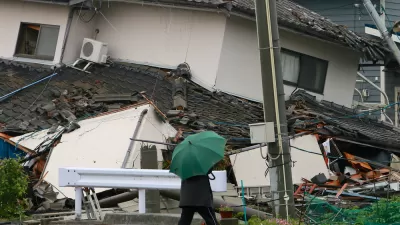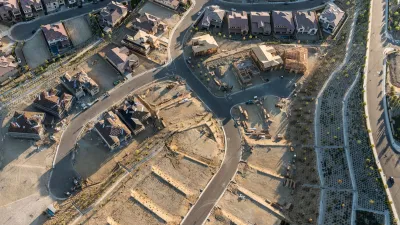A new Los Angeles initiative looks to neighborhood councils to lead disaster planning efforts that involve more residents.

Los Angeles Mayor Eric Garcetti recently announced a new program called Ready Your L.A. Neighborhood (RYLAN), an effort to encourage earthquake preparedness at the local level. The RYLAN program calls for local neighborhood councils to designate preparedness officers who can lead workshops, develop plans, and facilitate other preparedness activities.
"The initiative, detailed in a brochure on the RYLAN website, covers four aspects: search and aid; care and sheltering; communications; and utility and safety. Action items for residents include taking care of children who may be home alone, monitoring FM/AM radio stations, shutting off leaking natural gas and conducting a door-to-door safety check," reports Kira Barrett.
The goal of the RYLAN program is to engage residents who are not actively participating in disaster planning activities, notes Barrett. "Research shows that a majority of people don't participate in community-led disaster-preparedness efforts; in one study conducted in California, respondents had a 16% community engagement score when working with neighbors to prepare for disasters."
FULL STORY: LA seeks neighborhood buy-in to boost earthquake preparedness

Manufactured Crisis: Losing the Nation’s Largest Source of Unsubsidized Affordable Housing
Manufactured housing communities have long been an affordable housing option for millions of people living in the U.S., but that affordability is disappearing rapidly. How did we get here?

Americans May Be Stuck — But Why?
Americans are moving a lot less than they once did, and that is a problem. While Yoni Applebaum, in his highly-publicized article Stuck, gets the reasons badly wrong, it's still important to ask: why are we moving so much less than before?

Using Old Oil and Gas Wells for Green Energy Storage
Penn State researchers have found that repurposing abandoned oil and gas wells for geothermal-assisted compressed-air energy storage can boost efficiency, reduce environmental risks, and support clean energy and job transitions.

Poorest NYC Neighborhoods Pay Price for Delivery Boom
The rise of ‘last-mile’ e-commerce warehouses — and their attendant truck traffic and air pollution — is disproportionately impacting the most historically disadvantaged parts of the city.

Greening Oakland’s School Grounds
With help from community partners like the Trust for Public Land, Oakland Unified School District is turning barren, asphalt-covered schoolyards into vibrant, green spaces that support outdoor learning, play, and student well-being.

California Governor Suspends CEQA Reviews for Utilities in Fire Areas
Utility restoration efforts in areas affected by the January wildfires in Los Angeles will be exempt from environmental regulations to speed up the rebuilding of essential infrastructure.
Urban Design for Planners 1: Software Tools
This six-course series explores essential urban design concepts using open source software and equips planners with the tools they need to participate fully in the urban design process.
Planning for Universal Design
Learn the tools for implementing Universal Design in planning regulations.
Heyer Gruel & Associates PA
City of Moreno Valley
Institute for Housing and Urban Development Studies (IHS)
City of Grandview
Harvard GSD Executive Education
Salt Lake City
NYU Wagner Graduate School of Public Service
City of Cambridge, Maryland





























